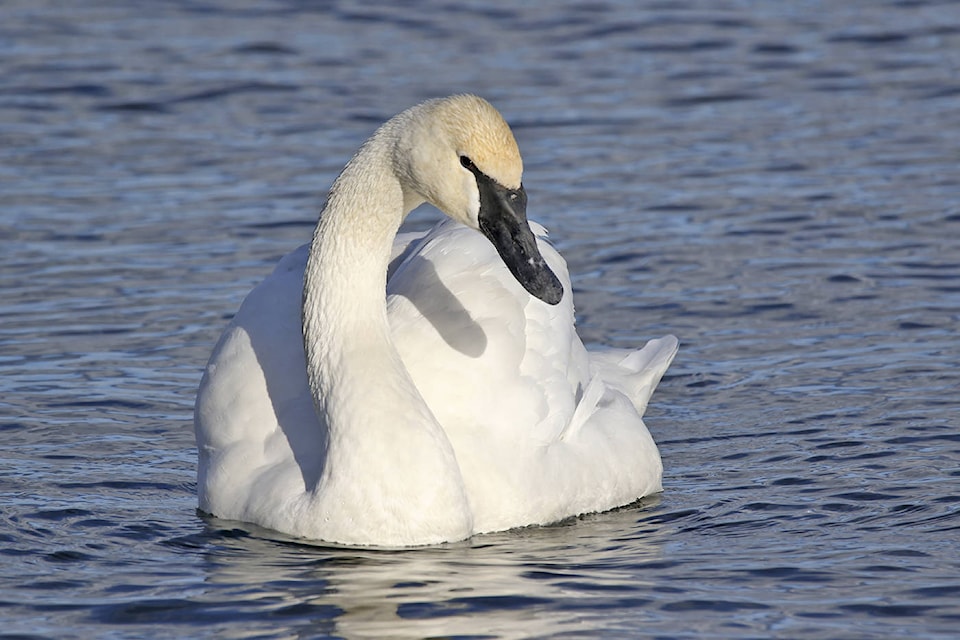When Leola Rogers heads out for a walk at Esquimalt Lagoon, she can’t help but feel like something is missing.
She rarely sees the big, white trumpeter swans that once graced the waters of the lagoon. There were four at the beginning of spring and now there’s only one, leaving the Metchosin resident wondering where the swans have gone.
“There were so many, you’d go down there and they’d be swimming around. They’re such a beautiful bird, they’re so graceful,” Rogers said. “There’s just the lone one now, if you even see it … I miss them and I can’t be the only person who is wondering what happened to them.”
Growing up, Rogers enjoyed watching the trumpeter swans swim around the lake near her hometown of Camrose, Alta., which is why she was thrilled to see mute swans at Esquimalt Lagoon roughly four or five years ago.
Walking along the shoreline, she would often see dozens of mute swans, which are distinguished by their orange bills and fleshy knobs – a trend that continued for several years. It wasn’t until a few years ago that the trumpeter swans moved into the area and the mute swans disappeared. But now, that population has declined as well, she said.
“They were definitely there in the winter and now there’s just one,” Rogers said. “It’s just kind of a mystery … and you notice when they aren’t there anymore.”
RELATED: Langford readers wonders where the swans have gone
In the past, Victoria was one of the country’s two main hubs for mute swan populations, many found at the lagoon.
Esquimalt Lagoon is a migratory bird sanctuary and is overseen by Environment Canada. Since mute swans are not native to North America, Environment Canada does not track mute swan populations. The reason for the apparent decline is unknown.
“The habitat available at Esquimalt Lagoon has not changed and is still suitable for breeding for mute swans and over-wintering for all species,” said an emailed statement.
“It is likely that there has been a redistribution of individuals from the Esquimalt Lagoon to other areas with suitable habitat.”
Swans are also a highly territorial species and are most aggressive during nest and brood rearing between March and August. It’s possible one or two highly territorial swans drove the others away from the area, said Environment Canada.



